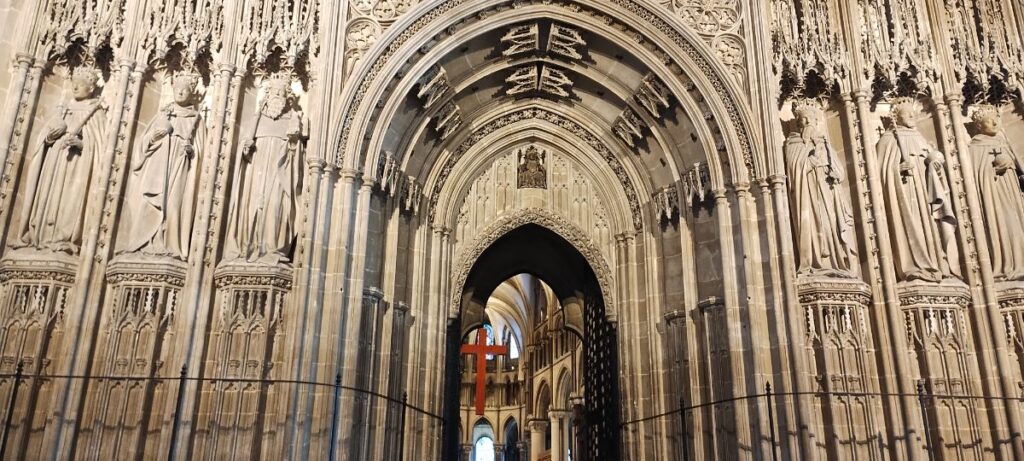After driving off the Chunnel shuttle (without scraping off any paint from the very narrow shuttle walls) we drive, on the wrong side of the road – a first for Rosie, to Canterbury where we are planning to stay overnight in a Park-and-Ride that allows motorhomes. Another bonus feature is that there is a pub right at the end of the parking lot, how sweet is that! I love England!

Getting into the motorhome section of the Park-and-Ride was less sweet. There were a ton of cars that we had to wend our way around. We have a portable CB radio handset that communicates well with the CB radio in the truck, so instructions from the navigator to the driver allowed us to inch our way thru the packed cars without denting any of them too badly. Kidding. No denting, or even scratching took place thanks to the herculean efforts of our intrepid adventurers!
The Park-and-Ride has a free shuttle bus (for motorhomes staying in the lot – just showing your parking ticket and no charge) that comes about every 10 minutes and provides a 5 minute ride (about 2-3 km) right to the old town section of Canterbury.
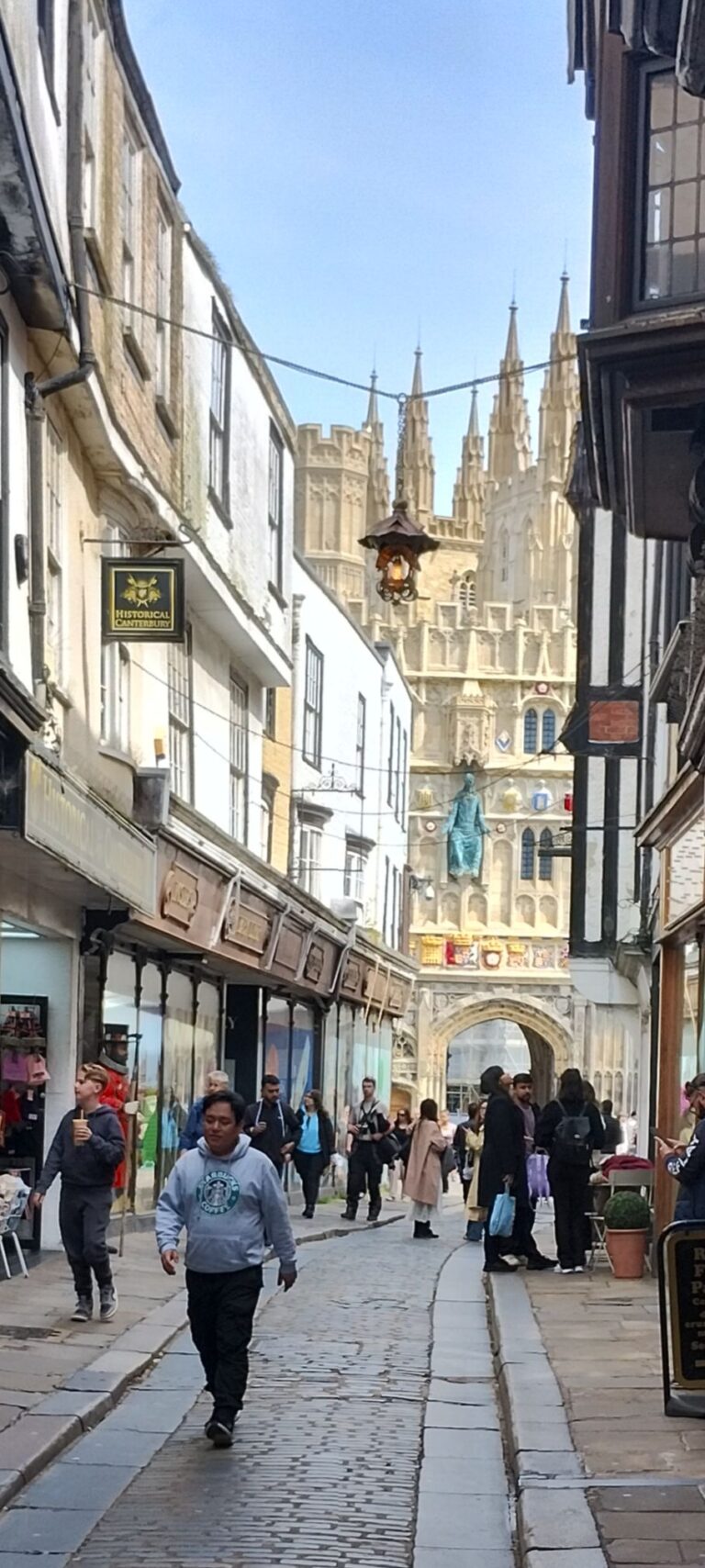
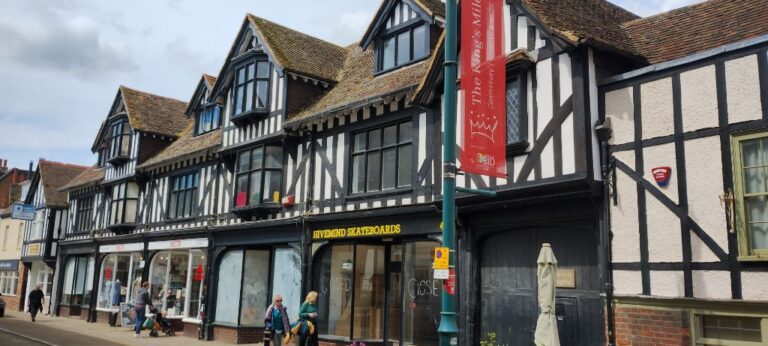
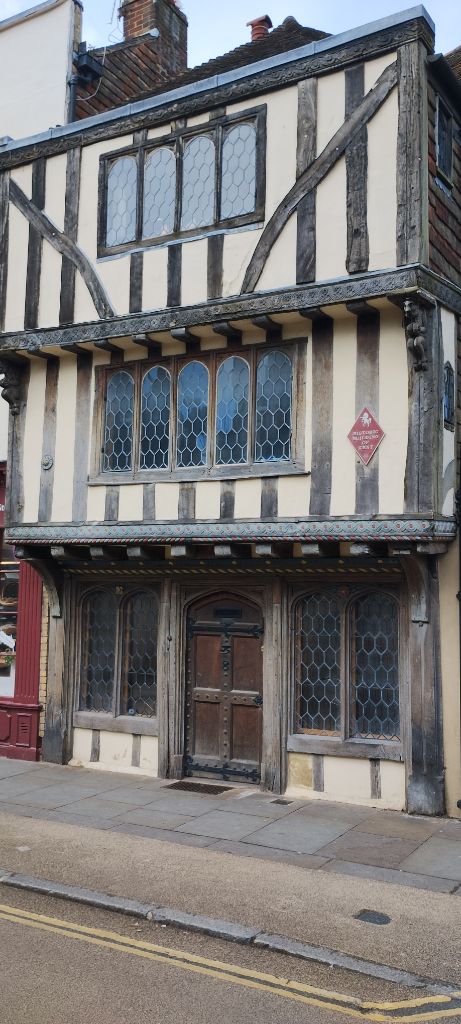
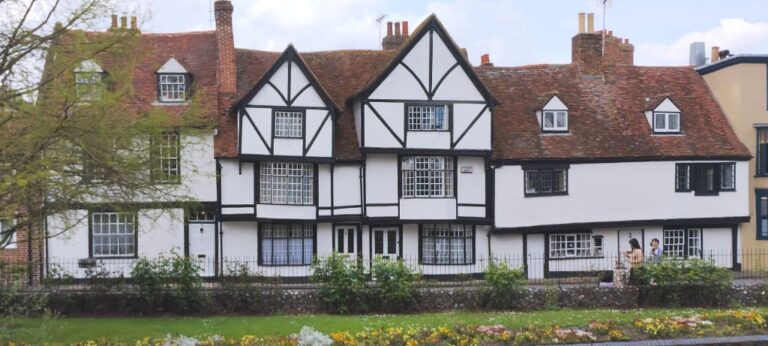
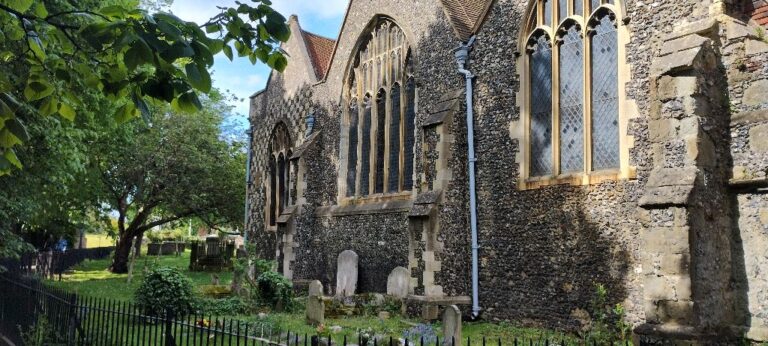
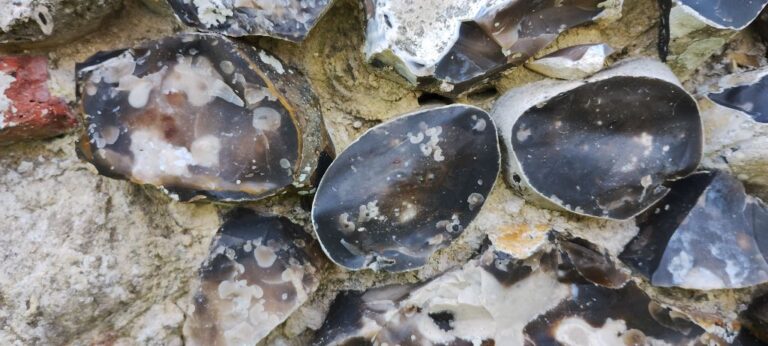
A little Google research determined that this glassy rock is flint, a type of rock that forms as nodules within chalk or limestone. It is not an igneous rock. Lots of chalk and limestone in this part of England, so it easy to see how this durable rock would be used as a building material.
Another day trip into Canterbury (Lump is getting quite good at bus travel) gets us to St. Augustine’s Abbey. Augustine was a monk sent to England by the Pope in Rome to bring Christianity to the pagan Anglo-Saxons. The Abbey was originally founded and 598 ce and has been built-up and torn-down many times between then and the 19th century. In 1071, after the Norman invasion of England in 1066 ce, the Anglo-Saxon churches were destroyed and replaced with large Romanesque-style church. In 1538 the church was closed (by Henry VIII after his hissy-fit with the Pope), buildings torn down, material sold, shrines broken up for their precious metals. The Abbot’s lodgings were converted to a royal palace (I guess Abbot’s lived better than the average citizen of the day) for Henry VIII’s wife, Anne of Cleaves. The palace has been used by both Queen Elizabeth I and King Charles I.
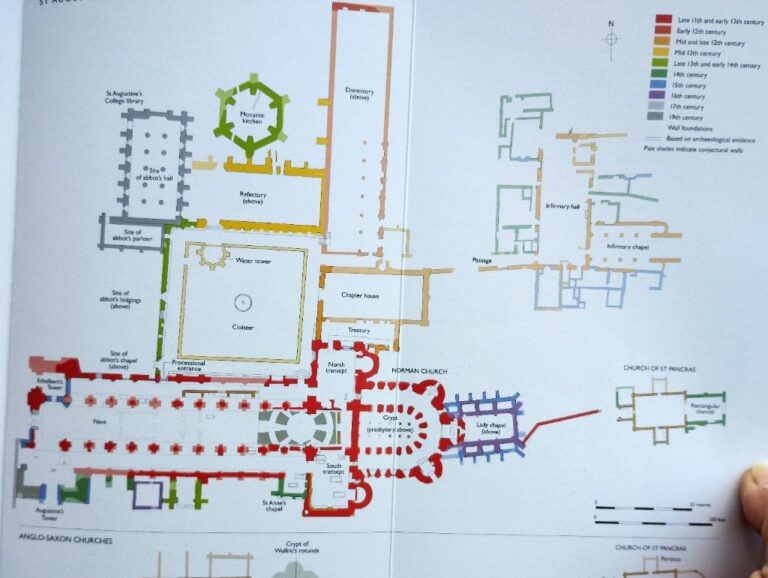
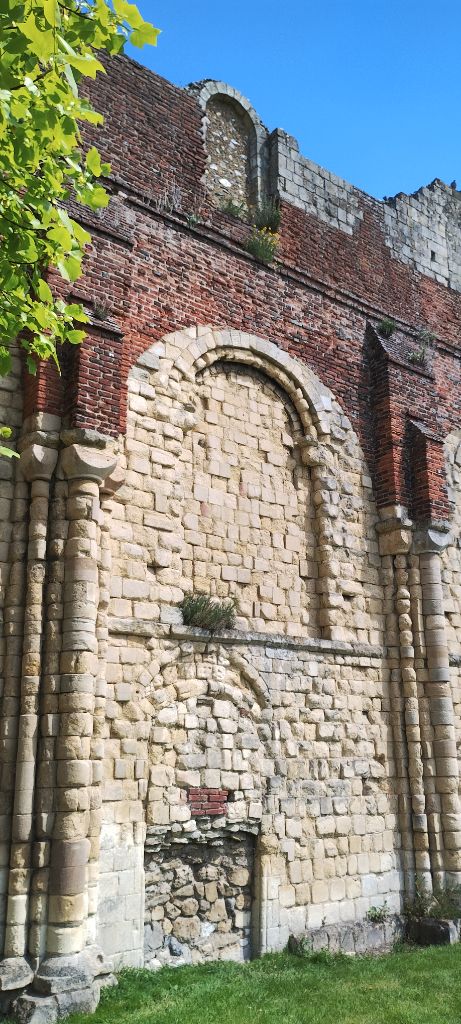
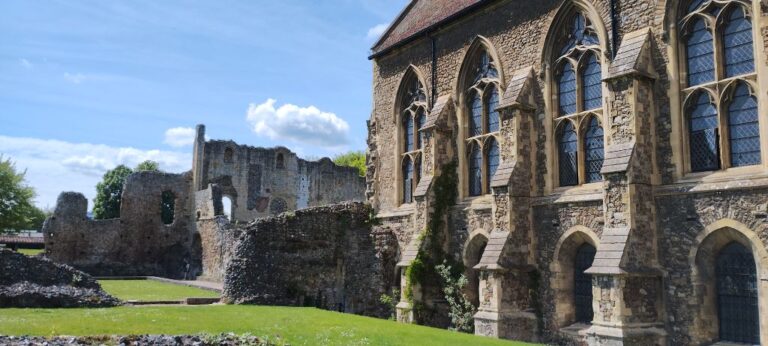
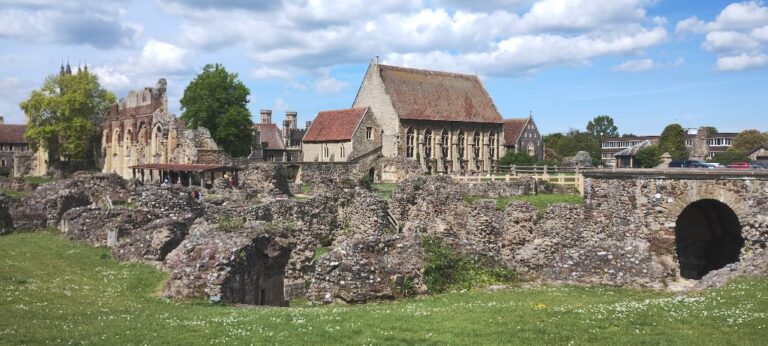
No trip to Canterbury would be complete without stopping in to see the Canterbury Cathedral. It is currently undergoing renovations, but the public is still allowed to visit.
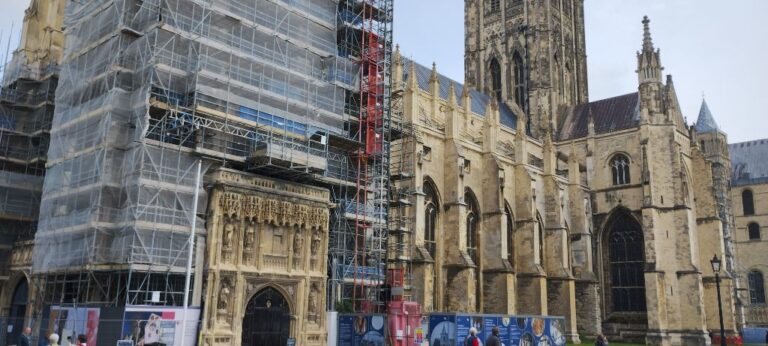
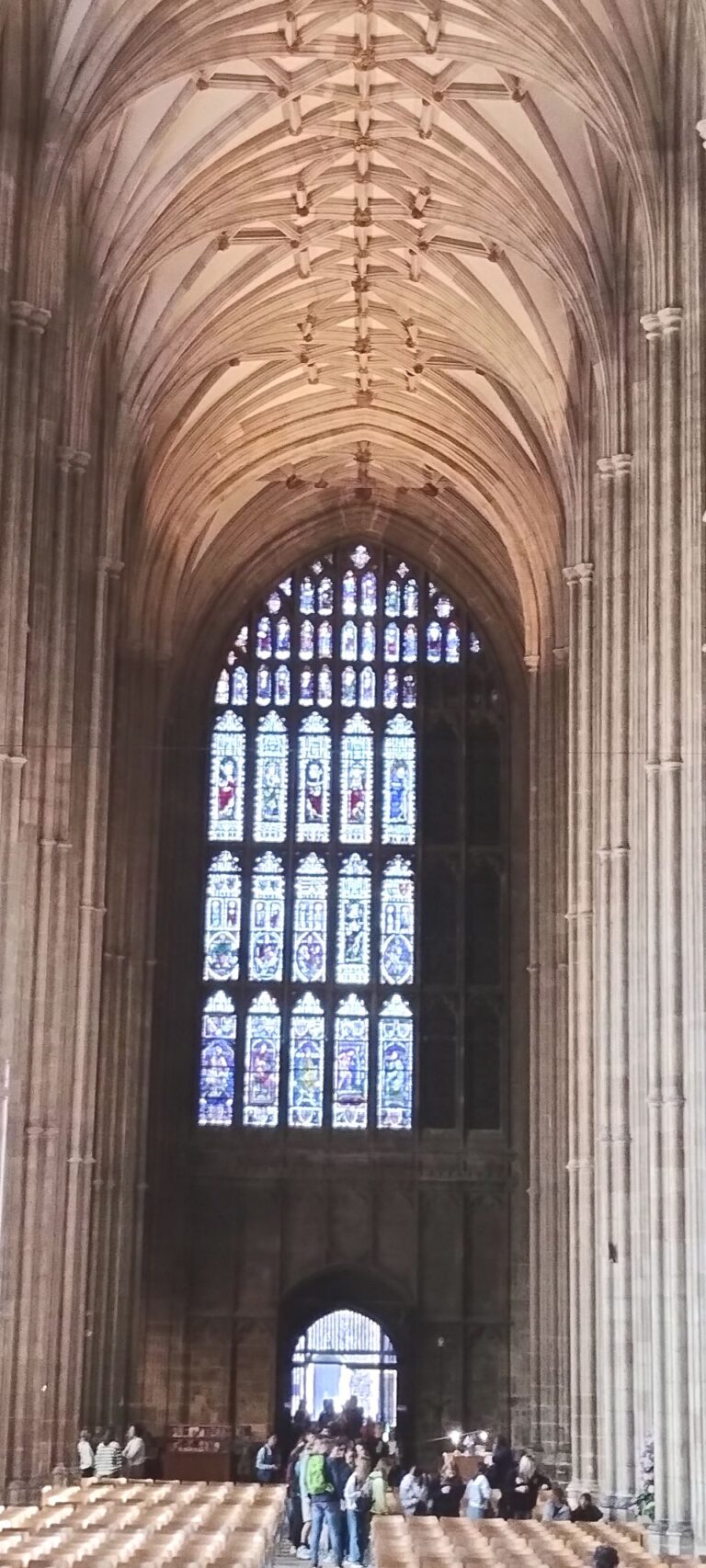
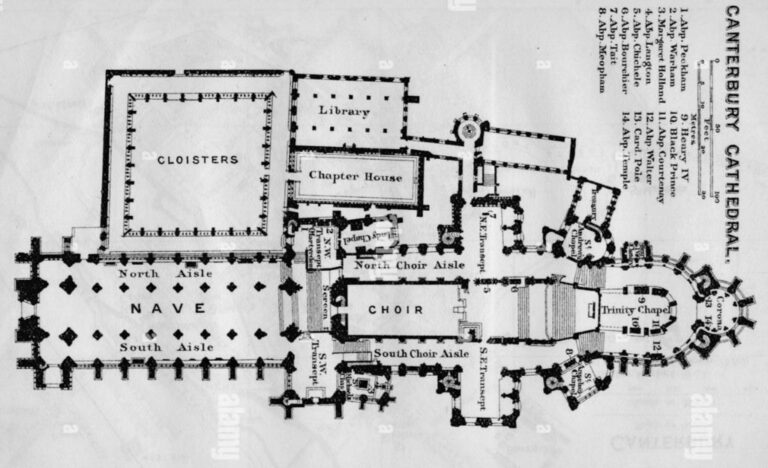
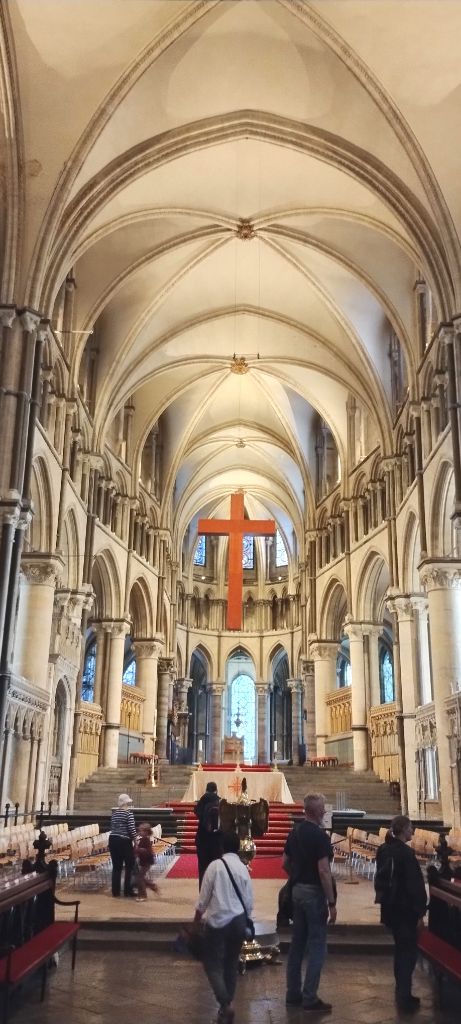
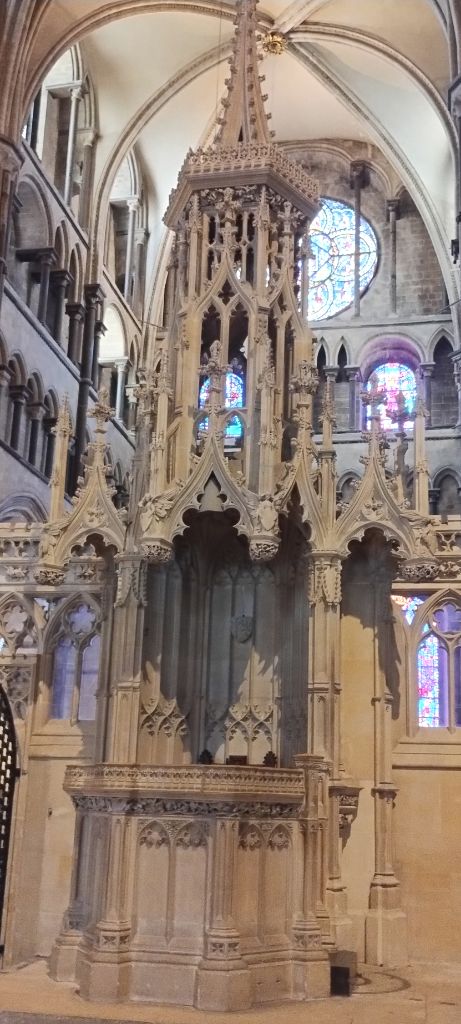
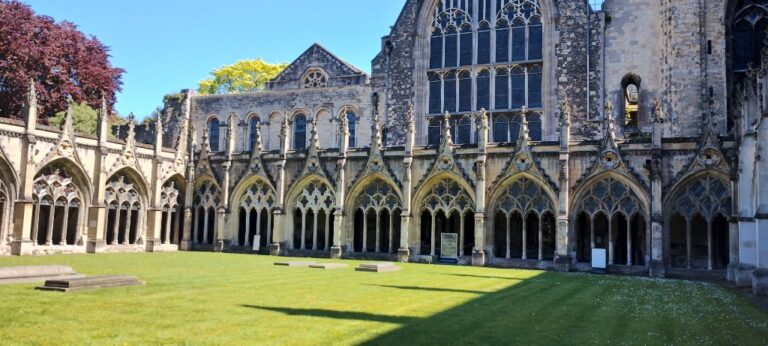
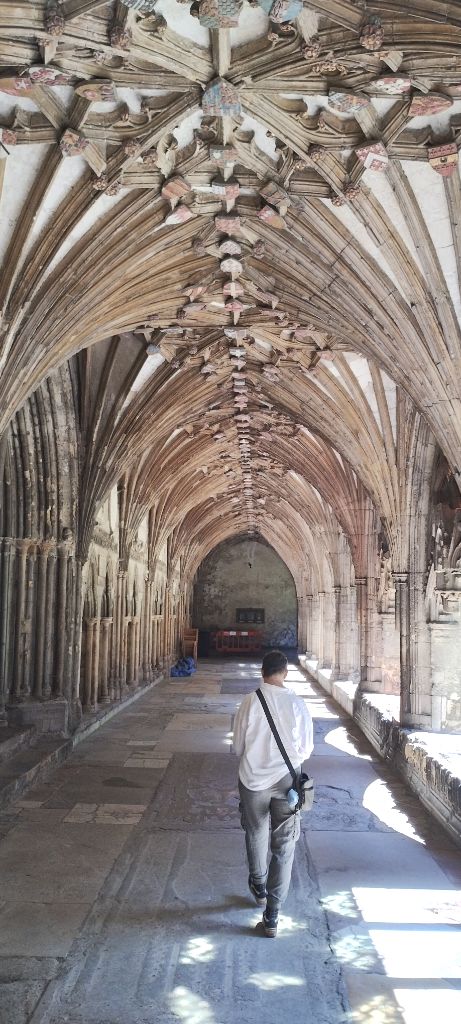
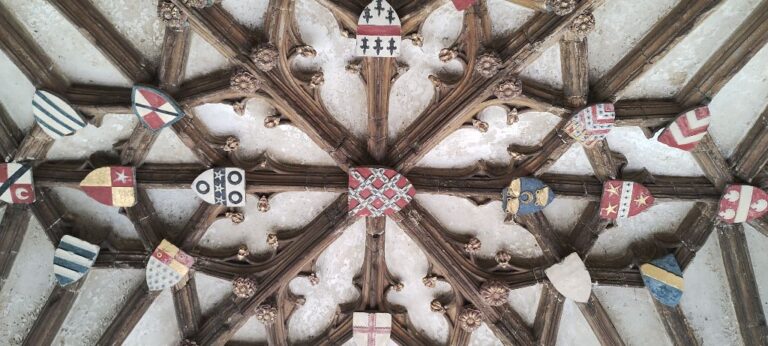
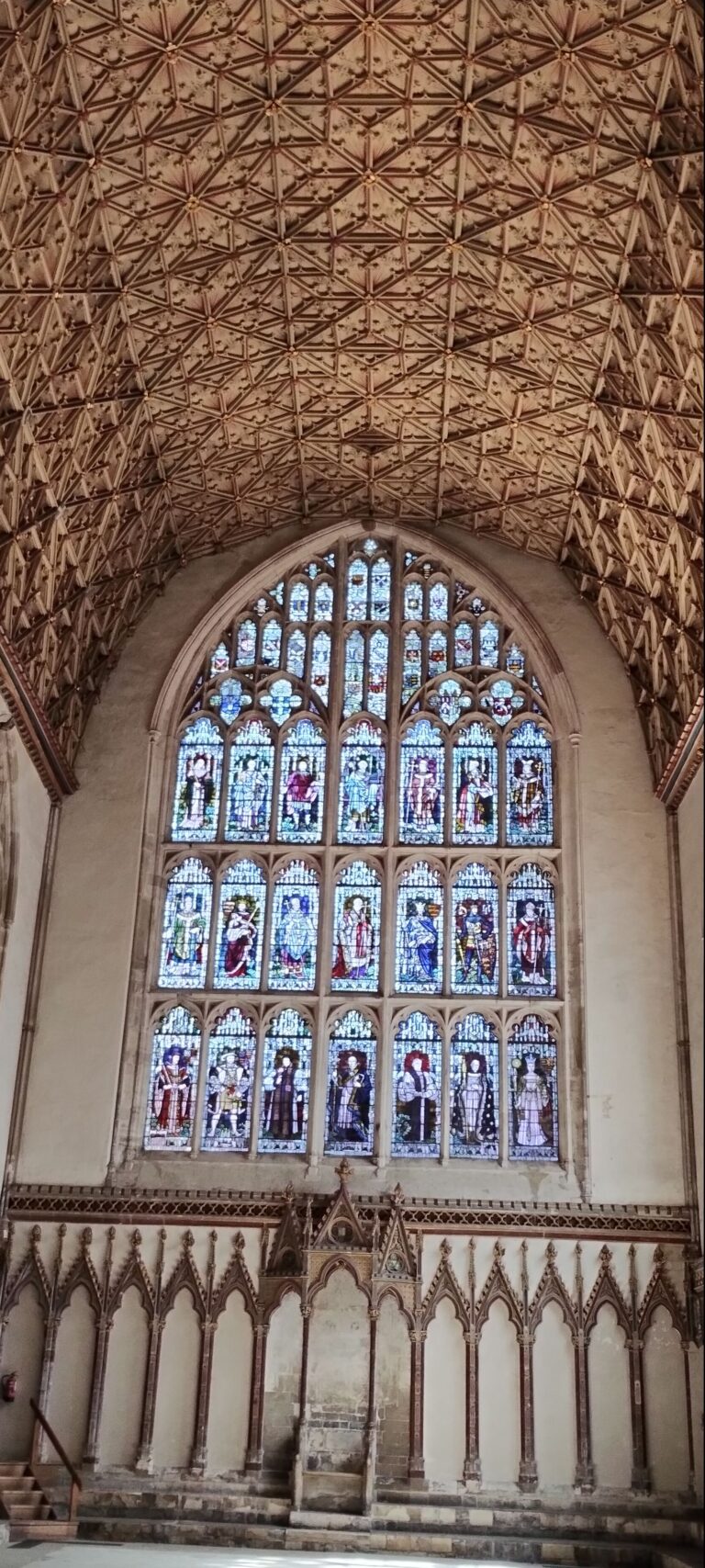
We also toured the crypt which is located below the Choir and Trinity Chapel. While it does have tombs, there was no evidence of foul creatures milling about. In fact, there are several chapels located in the crypt and no photography is allowed as it is actively in use by non-tourists.
Lump and I had a boys nite out and went to the local pub (Old Gate Inn) at the end of the parking lot. I ordered steak and chips, Lump ordered some of my chips. The food was really really good! Tasty steak, cooked perfectly. Big chunky chips, cooked 3 times (probably in lard – yumm!), all washed down with some great English Ale!
The girls stayed in and watched a chick-flick on Netflix. Good time all-round!

